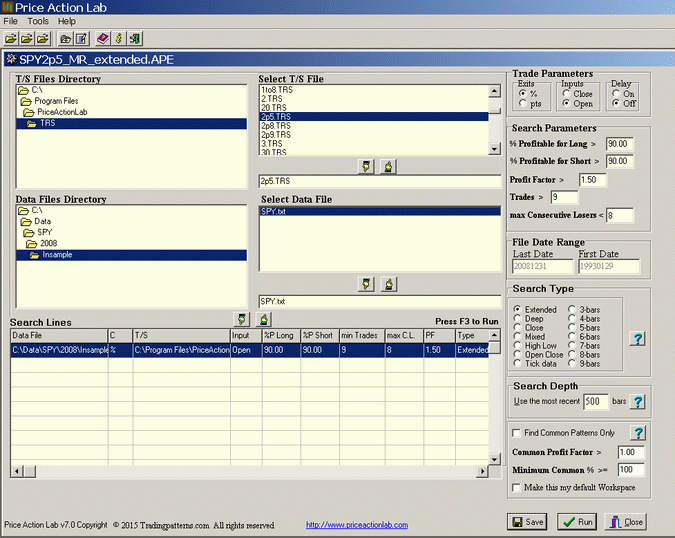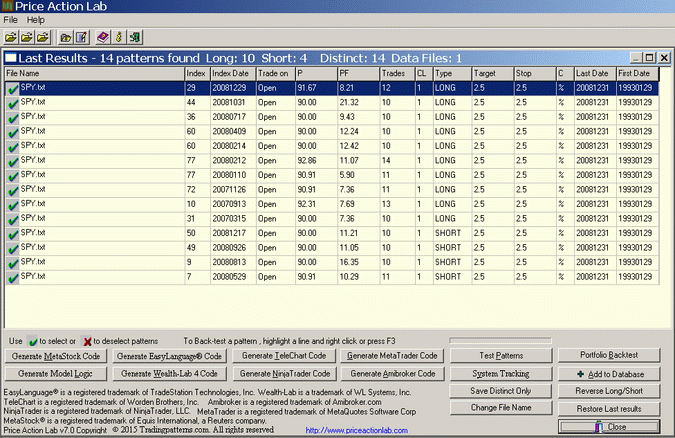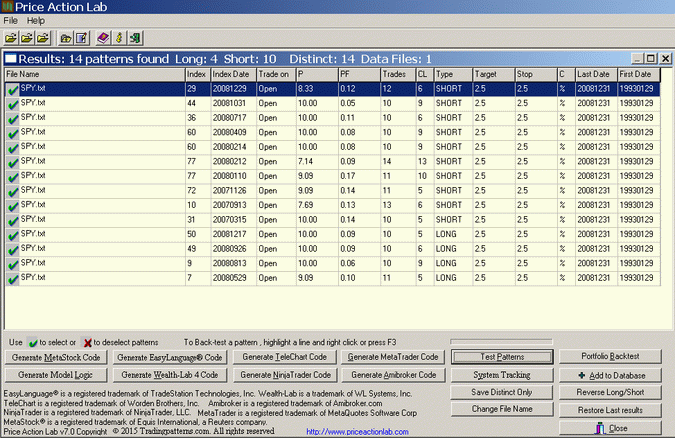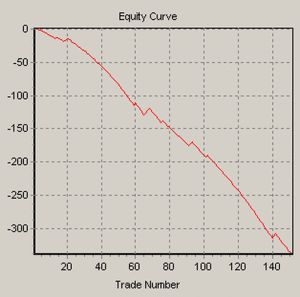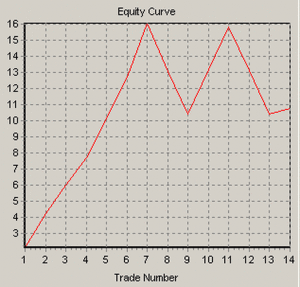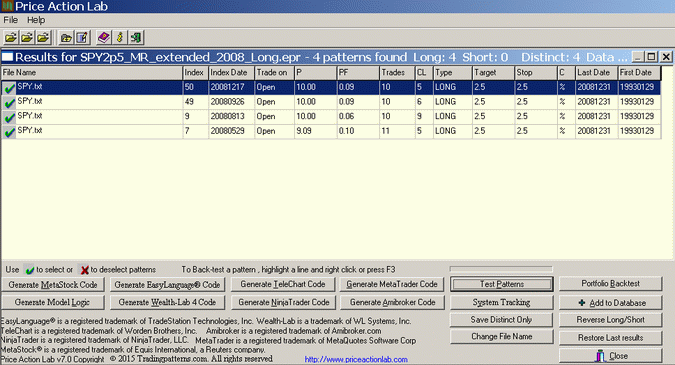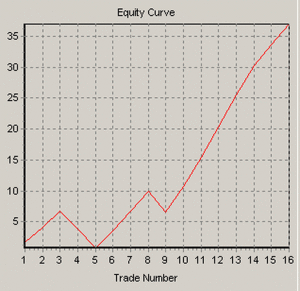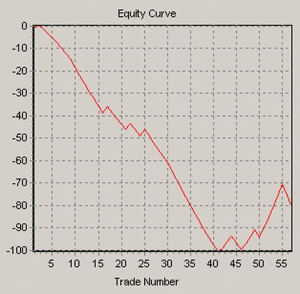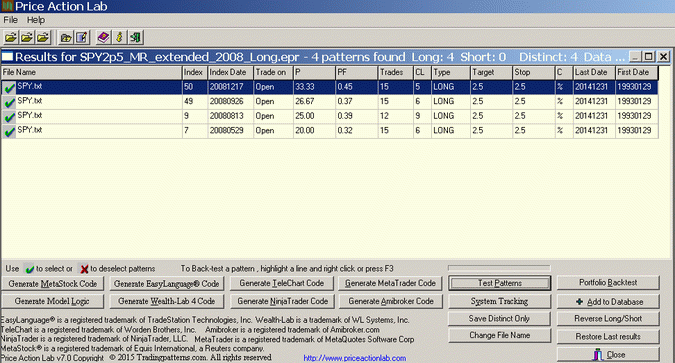Trading system developers usually look for profitable algos that stay profitable but one could instead look for profitable algos that have high probability of turning unprofitable and then trade against them during a period of mean-reversion.
Instead of trying to identify profitable trading algos on in-sample data that validate out-of-sample and remain profitable forward, one could instead try to identify unprofitable algos in some data sample that turn profitable in a forward sample. This often works because markets have become more mean-reverting in recent years.
In another post I talked about the Trading System Inversion Paradox and the fact that identifying a consistently losing system is as hard as identifying a consistently winning system. In this post I am not trying to identify consistently losing price patterns that turn to consistently winning but price patterns that are temporarily profitable when in fact their expected return should be zero. Therefore, there is no violation of the paradox mentioned. In essence, I intend to exploit the mean reversion property of some random price patterns. This is the process outline:
1. Identify profitable but random price patterns for long or short positions in a market
2. Invert those patterns and calculate their loss rate ( 100 – win rate)
3. Use the patterns in forward trading until there is sufficient mean-reversion
1. Identifying random, mean-reverting patterns
Any method may be used to find such patterns, including trial-and-error. For efficiency I used Price Action Lab to search for patterns in SPY data from inception to 12/31/2008 with win rate > 90, with more than 9 trades and with profit target and stop-loss of 2.5%. This is the workspace I used for the search:
Below are the results of the search:
Each line on the results corresponds to a price pattern that satisfies the performance parameters specified by the user. Trade on is the entry point, in this case the Open of next bar. P is the success rate of the pattern, PF is the profit factor, Trades is the number of historical trades, CL is the maximum number of consecutive losers, Type is LONG for long patterns and SHORT for short patterns, Target is the profit target, Stop is the stop-loss and C indicates % or points for the exits, in this case it is %. Last Date and First Date are the last and first date in the historical data file.
Price Action Lab identified 14 patterns that met the criteria specified on the workspace, 10 long and 4 short. I would normally not consider any patterns with more than 18 trades but the highest was 14. These low samples combined with the high win rate provide an indication that these particular formations may be random.
2. Pattern inversion
We can invert the patterns after clicking on Reverse Long-Short and then evaluate them in the in-sample using the Test Patterns tool. Below are the results:
It may be seen that the highest win rate of the inverted patterns is 10%. Below is the equity curve of the trades generated by all 14 patterns, which is a straight line down as expected, by design.
3. Forward trading
We hope that the equity curve will recover as the win rate of the patterns reverts towards a mean of 50%. Below is the equity curve in the period 01/02/2009 – 12/31/2009:
Net return in 12.7% (also the CAR) and profit factor is near 2. Actually, there was mean-reversion, as expected.
It turns out that long patterns are more robust. Below are the results for just the long patterns:
These four patterns have win rate near 10% after they were reversed from short in the original results. Below is the equity curve in the period 01/02/2009 to 12/31/2014:
Net return is 53.23%, CAR is 7.5% and profit factor is 4.95.
This is the equity curve from SPY inception to 12/31/2014:
The mean reversion is evident from the equity curve.
Below are the results with the patterns evaluated in the same period since inception:
It may be seen that win rates increased to above 20% with the highest at 33.33%. This raises the question of where the cut-off point should be set, beyond which the patterns are no longer traded. Possibly, a good choice is around 30% but this is still under investigation.
Summary
In this article I presented the results of research regarding the identification of mean-reverting price patterns. Although I started working on this a few years ago, I still have not decided whether this method has the potential I am looking for because there are some issues to resolve, one being the optimum cut-off point for the win rate of the reversed patterns, beyond which they are no longer traded. Nevertheless, this idea looks promising if one also considers the fact that almost 100% of system developers look for profitable systems that stay profitable where this method looks for profitable systems that will become unprofitable and essentially fades them.
You can subscribe here to notifications of new posts by email.
© 2015 Michael Harris. All Rights Reserved. We grant a revocable permission to create a hyperlink to this blog subject to certain terms and conditions. Any unauthorized copy, reproduction, distribution, publication, display, modification, or transmission of any part of this blog is strictly prohibited without prior written permission.



